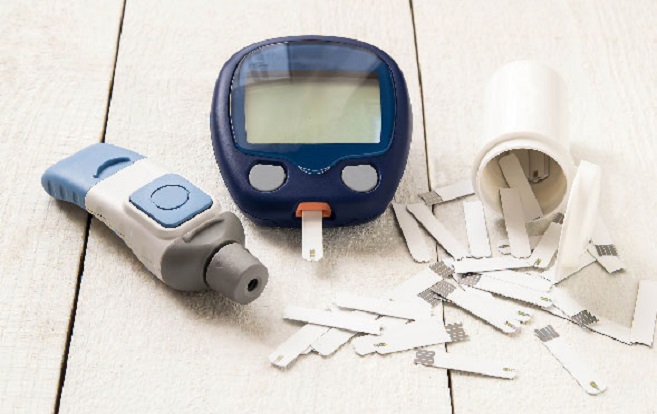Seven Facts Nurses Should Know About Diabetes

By Megan M. Krischke, contributor
Out of all the patients you see in a day, how many have or might have diabetes?
Nearly 26 million adults and children in the United States have diabetes, representing 8.3 percent of the population, which means that nurses will frequently encounter patients who are diabetic. Yet many will present with other problems.
“Sometimes there is so much focus on the other condition that glucose control can get overlooked. It is important to work with the clinician who is treating the patient’s diabetes to ensure that blood sugar levels are well managed while treating other conditions. Steroids can increase blood sugar levels and diabetics can face difficulties while recovering from surgeries,” explained Marjorie Cypress, RN, PhD, NP, CDE, president-elect of healthcare and education for the American Diabetes Association. “Taking factors like these into account helps to ensure the well-being of your patients.”
Diabetes is an area of high interest for health professionals, with a great deal of research and investment behind the frequent changes in medications, treatments and care protocols. Thus, TravelNursing.com has gathered some recent findings, interesting facts and helpful resources about diabetes to help keep you and your patients up to date.
Seven facts about diabetes you should know:
1. In the last 13 years, 13 new diabetes medications and insulins have been released.
“We have a lot more to choose from and we can individualize treatment better. We are seeing that the gut has a much bigger role in the disease than we realized and now we have hormones that can treat these defects,” said Cypress.
2. Regular eye exams are critical for preventing severe vision loss in diabetic patients.
Diabetic eye disease is the leading cause of vision loss among U.S. working-age adults, yet many diabetic patients are unaware of the danger. Diabetic retinopathy is the most common form of this disease, and typically has no symptoms until significant damage has occurred, but it can be detected by a comprehensive dilated eye exam. The risk of severe vision loss can be cut by 95 percent with early detection, treatment and follow up.
3. New clinical practice guidelines are available for pregnant women relating to diabetes screening and treatment.
The Endocrine Society released new clinical practice guidelines this month related to pregnancy and diabetes. Among the guidelines is a recommendation to test women for diabetes at their first prenatal visit because so many people are unaware that they have type 2 diabetes. Other recommendations include weight loss for overweight or obese diabetics prior to conception, and initially treating gestational diabetes with medical nutrition therapy and 30 minutes of moderate exercise daily.
4. The evidence shows that diabetes prevention measures are effective.
In addition to the 26 million Americans who have diabetes, another 79 million have pre-diabetes--meaning that they are at high risk for developing diabetes. Meanwhile the costs of treating diabetes are skyrocketing; Cypress reported that in the United States, $245 billion is spent annually treating diabetes and the complications associated with the disease.
“We know from the diabetes prevention program--a study that looked at people who were at high risk for developing diabetes--that it can be prevented or its onset delayed through intensive lifestyle changes in exercise and diet,” she remarked. “Because of this, prevention has taken on a prominent role.”
The National Diabetes Prevention Program, led by the Centers for Disease Control and Prevention (CDC), is an evidence-based program that has used lifestyle coaching to help participants reduce their risk of developing Type 2 diabetes by 50 percent.
5. A number of new technologies and resources are available to help patients manage their disease.
“Continuous glucose monitoring systems have been around for awhile, but there are now a lot of mobile apps to help patients with motivation and keeping track of blood sugar levels and food intake. Some companies have programs where clients send in their blood sugars and then get feedback and recommendations sent to their phones.” Cypress noted.
She also recommends pointing patients toward the American Diabetes Association (ADA) website, www.diabetes.org, which offers extensive information for patients, recipes, and advice on how to cope with the disease.
“Patients can also call the ADA hotline, 1-800-DIABETES. They have a well-trained call center staff who know what questions to ask and what materials to send to callers,” she said.
6. Nurses are in a unique position to support diabetic patients.
Nurses can support their diabetic patients by giving them the tools and education they need to understand the relationship between medication and what they eat and how to fit the treatment plan into their own life.
“If you just dictate to a patient saying, ‘You have to do A, B and C,’ it isn’t going to work,” Cypress explained. “You have to get to know patients, find out what their day is like, what is important to them, what will motivate them to take better care of themselves, and help them understand that diabetes is serious. Then you can work on developing individualized behavioral goals that are achievable.”
7. There is a comprehensive diabetes resource just for nurses.
According to Cypress, the ADA’s Complete Nurse’s Guide to Diabetes Care is an excellent resource for keeping up-to-date on diabetes care and offers ideas for treatments of type 1, type 2, and gestational diabetes.
“It is very comprehensive but not so huge that you can’t carry it with you,” she commented.
© 2013. AMN Healthcare, Inc. All Rights Reserved.